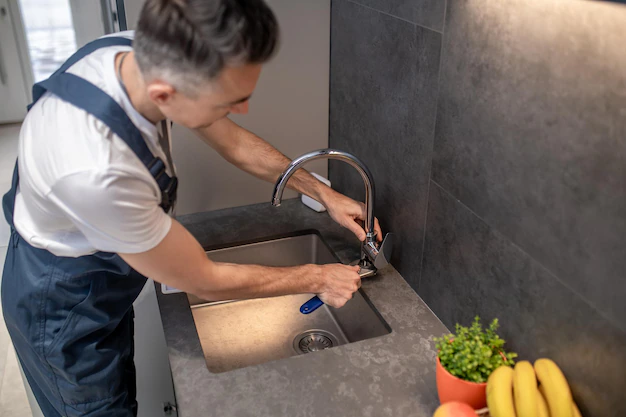How can we make remote work fun? Here’s a how-to guide for you.
In the contemporary era where telecommuting is becoming increasingly prevalent, finding ways to make remote work fun is not just a desire but a necessity. When work is enjoyable, it significantly enhances your productivity, mental health and overall satisfaction.
This write-up provides an insight into how you can make remote work fun and enjoyable. We will delve into engaging in virtual team building activities by understanding the sundry online software and platforms available. We will also proffer tips in maintaining a work-life balance ever pivotal in remote work scenarios and finally, we will explore various ideas for creating a motivating workspace right in your home. These elements combined can help you look forward to each workday and reduce work fatigue.
Table of Contents
Engaging in Virtual Team Building
The established norms of team building have been completely overhauled these past couple of years. As the world migrates to digital spaces, forcing many businesses and teams to work remotely, a new challenge presents itself: How does one promote team cohesion and productivity in the age of Zoom and Microsoft Teams?
The good news is that virtual team building is not only possible but even advantageous in certain aspects. Here are top strategies for remote team building, ensuring the team remains centered on common goals.
Jumpstart the Team
To start, re-imagine and revamp the virtual meeting by creatively engaging the team members. Prepare fun quizzes that serve both as ice-breakers and a means to incentivize the team. Use the prime first 10-15 minutes of each meeting to connect team members, by discussing non-work related topics.
Another excellent strategy employs “virtual escape rooms”, where the team works cohesively to solve puzzles and mysteries in a fun, interactive setting. Not only does this strategy foster collaboration but also hones the team’s time management, problem-solving, and decision-making skills.
Appreciate and Acknowledge
A central aspect of any team-building strategy revolves around appreciation and acknowledgement. This approach might be particularly more impactful when working remotely. Develop a virtual “Shout-Out Board” where teammates can recognize and appreciate each other’s achievements.
Next, consider hosting a virtual lunch or happy hour. Simply allocate the organization’s usual entertainment budget to send out snack or beverage care packages before the scheduled event. A relaxed setting could stimulate informal communication, often stimulating personal bonding and improved camaraderie.
Even fitness can serve as a binding tool for a remote team. Fitness challenges can be a fun and effective way to reduce stress and promote camaraderie among the team. It might be something as simple as a step-count competition or a shared yoga session.
However, remember the essential element at the heart of any team—its individuals. Regular one-on-one check-ins are crucial for team leaders, not just to discuss work but to address any personal concerns their team members might be facing.
To conclude, successfully adapting to this new work environment will ultimately pivot on your team’s culture. Encourage transparency, foster engagement and make genuine efforts to understand and value the team’s input. Despite the geographical distances, your team’s success hinges on collaboration, trust, and mutual respect.
As we break down the physical workplace walls, let us reinforce those that make a successful team even stronger. The world may have gone virtual, but the essence of a team remains unaltered. It’s all about people, connections, and shared ambitions.

Maintaining a Work-Life Balance
Balancing a Remote Professional and Personal Life
The boundaries between personal and professional life frequently blur, particularly when working remotely. The key to maintaining equilibrium lies in strategically organizing schedules, streamlining communication, and incorporating self-care.
Managing the Calendar
The backbone to work-life balance revolves around an organized schedule. Utilize digital calendars for holistic view of professional commitments, tasks and deadlines but don’t forget to schedule in personal activities too. These could be non-negotiable family dinners or that early morning yoga session. By visibly allocating time for both, professionals maintain a balance between their work demands and personal needs, making sure neither overwhelms the other.
Streamlining Communication
The risk of remote working is the perennial availability syndrome. It’s crucial to set boundaries, so professional tasks do not overrun personal time. Communicate availability clearly with teammates, respecting different time zones if applicable. Establishing ‘communication hours’, much like office hours, provides recourse for colleagues to seek assistance while respecting down time. Deploy tools like Slack, Trello, and Asana to coordinate and keep track of progress, mitigating the need for real-time communication.
Focus on Self-care
The hustle of the corporate world often leaves professionals neglecting their physical and mental health. Incorporating self-care is not an afterthought anymore, it is an essential ingredient to truly balance work and life. Activities could be as simple as a daily 30-minute walk or reading a book. Meditation and mindfulness practices are excellent tools for mental wellbeing and productivity. Encourage employees to own their schedule, punctuating work with micro-breaks to prevent burnout.
Elevate The Home Office
A dedicated workspace elevates productivity and enforces a boundary between home and office. Even if space is at a premium, allocate a productive area with good lighting, an ergonomic chair and essentials within easy reach. Adorn it with plants or motivational posters to create a comforting environment conducive to quality work.
Cultivate Digital Literacy
With remote work on the rise, digital literacy is no longer a luxury, it’s a necessity. Set up seminars or workshops on new software and communication platforms. Understanding technology saves times and boosts efficiency.
Balancing work and life remotely within the corporate realm demands a strategic approach. With the aforementioned techniques, a productive, engaged and balanced existence is not just a possibility but a reality.
Creating a Motivating Workspace

Building a productive and motivating workspace at home isn’t just about investing in a great desk or a comfortable chair. It’s about creating an environment that fosters creativity, concentration, and overall well-being. With the drastic shift towards remote work due to the global pandemic, now, more than ever, it’s become exceedingly vital for professionals to master the art of creating the ideal work domain at home.
Structure the Workplace Correctly
Firstly, let’s look into the significance of workspace optimization. A healthy, well-structured work environment is crucial in maintaining focus and reducing distractions, which in turn boosts productivity. A bad or disorganized workspace can impede flow, hinder creativity, and has the potential to snowball into creativity blocks and burnout.
Start by analyzing your workspace. Chances are, there is room for immediate, impactful optimization. Go for a desk set-up that resonates most with your working style. Analyze the lighting conditions, ergonomic factors, noise levels, etc. The primary goal is to make the workspace functional without compromising on comfort.
Manage Clutter
Put some thought into clutter management. A clutter-filled workspace can be a hub of distractions. So, maintain a regular cleaning schedule and use tools and techniques like filing systems, digital tools for document management, cable management, etc., to keep your workspace tidy and systematically organized. A cleaner workspace can significantly enhance efficiency and productivity.
Set Clear Boundaries
Beyond the physical aspects, set clear boundaries. Maintaining a work-life balance when working from home is a universal challenge workers grapple with. It’s essential to train yourself and others in your home to respect your workspace. Creating these boundaries helps maintain professionalism and prevent burnout.
Use Available Software Tools
Software tools can also act as productivity boosters. There’s a vast pool of digital tools and platforms available to help professionals stay organized, manage tasks better, collaborate, track time, and more. Explore, experiment, and choose the ones that suit your work style and needs the best.
Make the Workplace Visually Appealing
Consider making your workspace visually appealing and inspiring. Add some greenery with houseplants, keep inspirational quotes or photographs nearby, or decorate the place with artwork or personal mementos. The key is to make your workspace a place you genuinely enjoy spending time in, which can, in turn, boost creativity and productivity.
Have Regular Breaks
Finally, never underestimate the power of taking regular breaks. Working non-stop can blur the line between efficiency and exhaustion. Step away from your workspace occasionally for a brief rest, a stretch, or a change of scenery. Such breaks can recharge your brain and maintain a consistent energy level throughout the working hours.

Key Takeaways
In conclusion, building a motivating and productive workspace at home requires thought, planning, and a bit of experimentation. It’s an ongoing process of refinement, adjusting to your evolving work style and needs. But with the right approach and dedication, you can transform any space into a productivity haven, giving you an edge in the current remote working revolution.
Finding joy and satisfaction in remote work, is about harnessing online resources for team building, maintaining a healthy work-life balance, and cultivating a motivating workspace. With the right balance of connection, boundaries, and environment, remote work doesn’t need to be a slog. Instead, it can be a liberating experience that offers just as much, if not more enjoyment as compared to a traditional work method.
Let these strategies guide your journey to transforming your work-from-home experience. Here’s to enjoying the flexibility of working from home, and making each day count for professional productivity and personal fulfillment.



